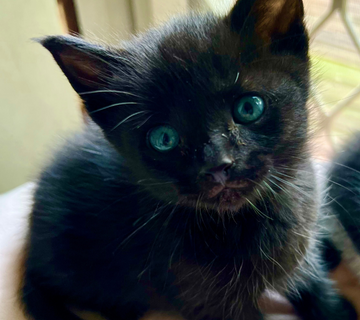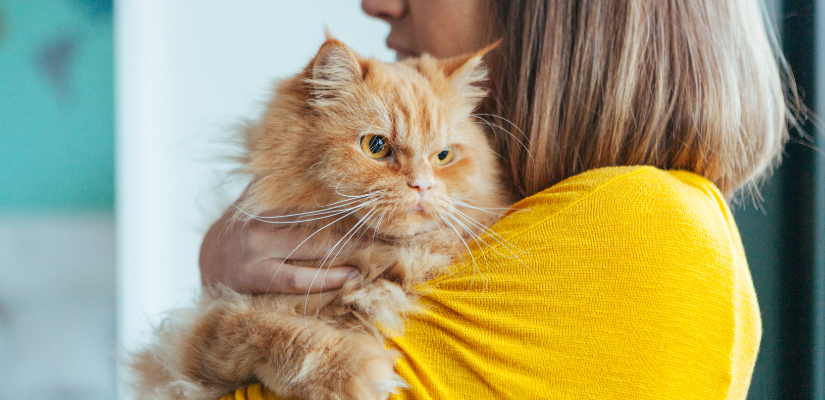Our feline companions weave their way into our hearts, becoming cherished members of our families. As devoted cat owners, we share a profound bond with these enigmatic creatures. Yet, with this deep connection comes the challenging reality of one day facing our cats’ end-of-life journey.
In this article, we’ll explore signs that indicate your cat is approaching the end of their life, offer insights into providing compassionate care during this time, and delve into the complex question of whether cats are aware of their impending passing.
Is My Cat Dying? How can you tell if your cat is dying, and what can you do to help them?
Recognising the Signs of a Dying Cat
Cats have an uncanny ability to communicate with us through their behaviour. As they near the end of their lives, their actions may serve as silent messages. Look out for subtle changes like decreased appetite, sudden weight loss, lethargy, different grooming habits, or a preference for isolation. These shifts in behaviour can signal that your cat is transitioning from its vibrant self to a state of decline.
Conversely, cats are known to pick up on their final day or days, right before it’s time to pass. Though they might have spent a while conserving their energy and pulling away from you, they might use up all their final energy reserves as their life ends, seemingly getting better when they’re just wanting to spend time with you and enjoy their final hours. This can mean an extra clingy, loving, and even hungry cat – and although these should be positive signs, it’s important to be prepared for any outcome.
It’s crucial to note that these signs are not definitive indicators of imminent death, but rather indications that your cat might be experiencing discomfort or illness. If you notice any of these changes, consult your veterinarian promptly for a proper diagnosis and guidance on how best to support your feline friend.
Providing Comfort and Care
As your cat reaches the end of their life, ensuring comfort becomes paramount. Designate a peaceful and quiet space where your cat can rest undisturbed. Soft and warm bedding is essential, as a dying cat’s body temperature can drop, making them sensitive to cold. Cushioning them with blankets or towels can help maintain their comfort.
Minimising stressors is also crucial during this time. Avoid loud noises, sudden movements, or introducing new animals to the environment. Cats in their final stages of life can become easily agitated, so maintaining a serene and predictable atmosphere can alleviate their anxiety.
Monitoring and Offering Support
Regular monitoring of your cat’s condition is essential to determine if they’re experiencing any problematic changes. Consulting your veterinarian is paramount in ensuring your cat’s comfort. Your vet can offer advice on pain management strategies and suggest interventions to alleviate any issues your cat might be facing.
Your presence and attention play a vital role in providing support. Offer gentle pats and soothing words, reassuring your cat of your unwavering companionship. Keep an eye on their appetite and fluid intake, as dehydration can exacerbate their condition. If your cat’s eating habits change significantly, consult your vet for guidance on appropriate nutritional support.
Recognising the Process of Dying
While the exact experience of a dying cat remains a mystery, it’s believed that they sense changes within their bodies. Cats may exhibit increased sleepiness, altered breathing patterns, and decreased responsiveness. It’s a natural instinct for cats to seek solitude during this time, possibly due to their wild ancestors’ survival instincts.
This period can be a delicate dance between life and transition. The heightened sleepiness is the body’s way of conserving energy as it prepares for the final stage. Altered breathing patterns, including rapid breathing or intermittent pauses, can occur. While it might be distressing to witness, it’s often a sign that the body’s systems are slowing down.
When these signs are clear, make sure your cat is comfortable and calm. Stay by their side to soothe them, and try to remain calm yourself to signal that everything is okay.
The Desire for Solitude: Cats’ Tendency to Leave Home to Die
One of the intriguing phenomena observed in cats nearing the end of their lives is their tendency to seek solitude outside their familiar environment. While it may be disconcerting for owners, it’s essential to understand that this behaviour is rooted in a primal instinct. Cats instinctively seek a secluded and safe place to pass away, much like their wild ancestors did. While it’s challenging for us, it’s a way for them to face their final moments with dignity.
When a cat leaves home to die, it might seem as if they are running away. However, this act isn’t driven by an attempt to escape their owners but rather an innate desire for privacy during this vulnerable time. It’s an act deeply embedded in their evolutionary history and shouldn’t be perceived as a rejection of the love and care you’ve provided throughout their lives.
Respect your cat’s needs and wishes, and remember that if they do leave, it isn’t a reflection of their love for you – it’s just how they’re built to feel safest.
Emotional Support for You and Your Cat
Supporting a dying cat involves not only addressing their physical needs but also providing emotional comfort. This phase requires a delicate balance between your cat’s needs and your own emotions. Cats, known for their sensitivity to energy, can sense your emotional state. Your presence during this time can offer them a sense of security and connection.
Be present for your cat through gentle touch, soothing words, and simply being there. Stroke their fur softly and offer gentle pats, catering to their preferences and sensitivities. Your reassuring touch can provide a familiar and calming sensation amidst the changes they are experiencing.
Spend quality time with your cat in their chosen resting spot. Share moments of quiet companionship, reading a book or engaging in activities that bring comfort to both of you. A familiar voice can be reassuring for your cat, as they associate your gentle voice with care and safety.
In these final moments, your presence offers reassurance and reminds your cat of the loving bond you share. Embrace the emotional depth of this connection and let it guide you in offering the comfort your feline companion needs during this significant journey.
Making the Decision: Quality of Life vs. Prolonging Suffering
If you are faced with the decision-making process regarding euthanasia, it can be incredibly challenging and emotionally fraught. It’s crucial to assess your cat’s quality of life objectively, even if it means setting aside your own feelings for a moment. While the thought of saying goodbye is heart-wrenching, making this choice based on your cat’s well-being is the ultimate act of love.
Factors to consider include their pain levels, overall well-being, and the ability to engage in activities they once enjoyed. Observe their daily routine and habits. Are they still able to eat, groom, and move around comfortably? Do they display signs of pain or distress that outweigh their moments of contentment?
Consulting with your veterinarian is essential in navigating this difficult choice. They can provide a professional assessment, considering your cat’s health status, medical history, and the potential outcomes of various interventions. An open and honest conversation with your vet can guide you in making a decision that aligns with your cat’s best interests.
While it’s a heartbreaking decision, remember that you are prioritising your cat’s comfort and dignity. Your veterinarian can guide you through the process and help you understand the options available, allowing you to make a decision that reflects the deep bond you share with your feline friend.
Grieving and Coping
Following your cat’s passing, grief is a natural response. Allow yourself to mourn without judgement. The emotional connection you shared with your cat leaves a profound impact on your life, and grieving is a way of honouring that bond.
Seek support from friends, family, or pet loss support groups. Sharing your feelings with those who understand the unique relationship you had with your cat can provide comfort and a sense of community. Sometimes, simply having someone to listen and share stories with can be therapeutic.
Remember the joyful moments you shared and consider creating a memorial to honour your feline friend’s memory. A photo collage, a garden marker, or a special keepsake can serve as a tangible reminder of the love and companionship you experienced together. This act of remembrance can offer solace as you navigate the grieving process, celebrating the life and joy your cat brought into your world.
The journey of a cat’s end-of-life is one of compassion and empathy. While we may never fully comprehend a cat’s awareness of its impending passing, we can provide comfort, love, and a peaceful environment during their final days.
As devoted companions, our role is to ensure they experience their transition with the dignity and care they deserve. By understanding the signs, offering unwavering support, and making informed decisions, we can navigate this journey together.
Remember that each cat is unique, and the experience of end-of-life may vary. Pay attention to your cat’s individual needs and preferences, and lean on your veterinarian for guidance and advice tailored to your specific situation.

Are you looking to adopt a pet or donate to a pet rescue organisation? Georgie and Cindy from Large Hope SEO foster cats and kittens on the Sunshine Coast in Australia. If you’re local, get in touch to discuss adopting from the rescues. See cats and kittens available for adoption or donate so we can save more kittens.
 seolounge
seolounge